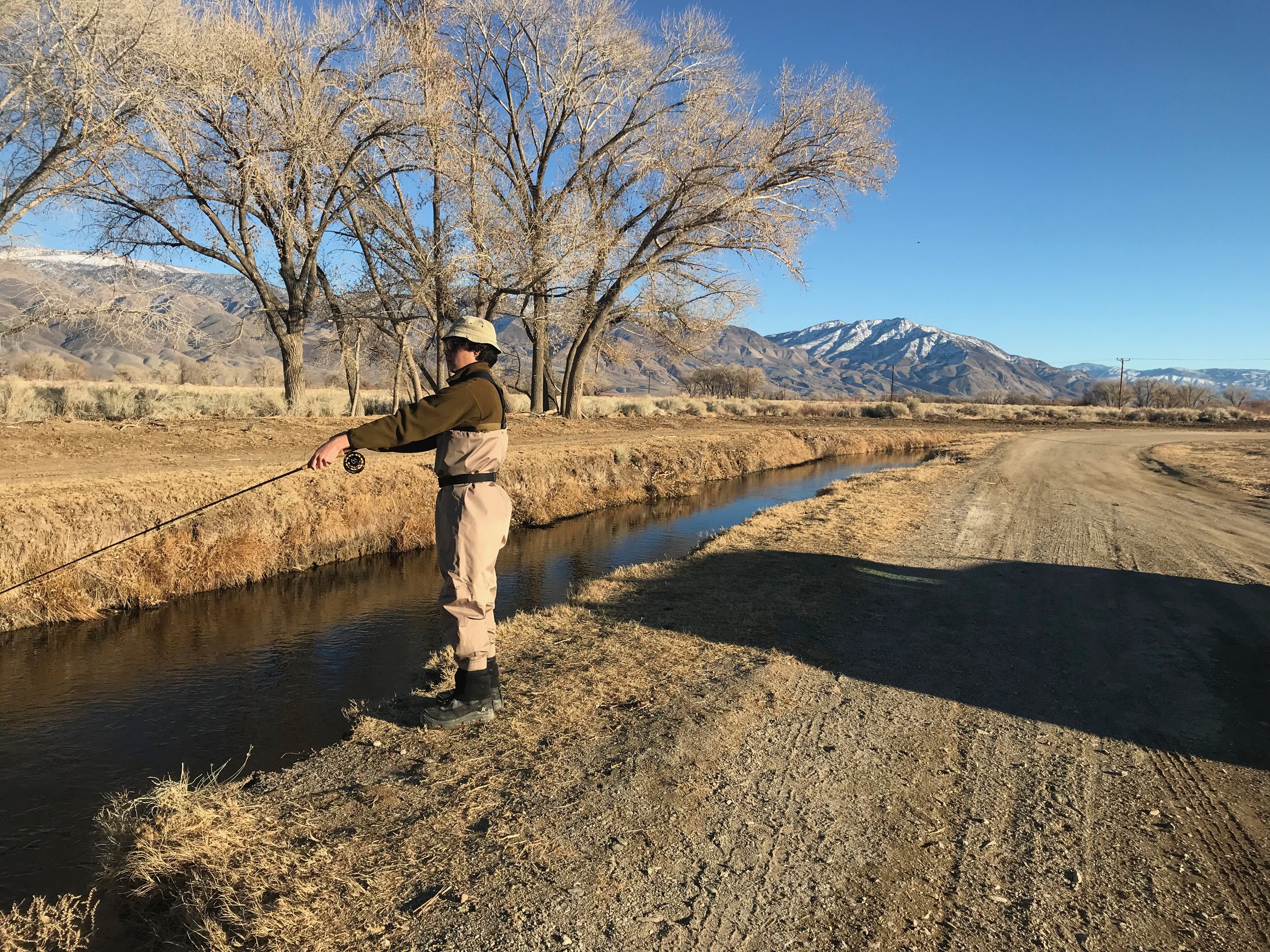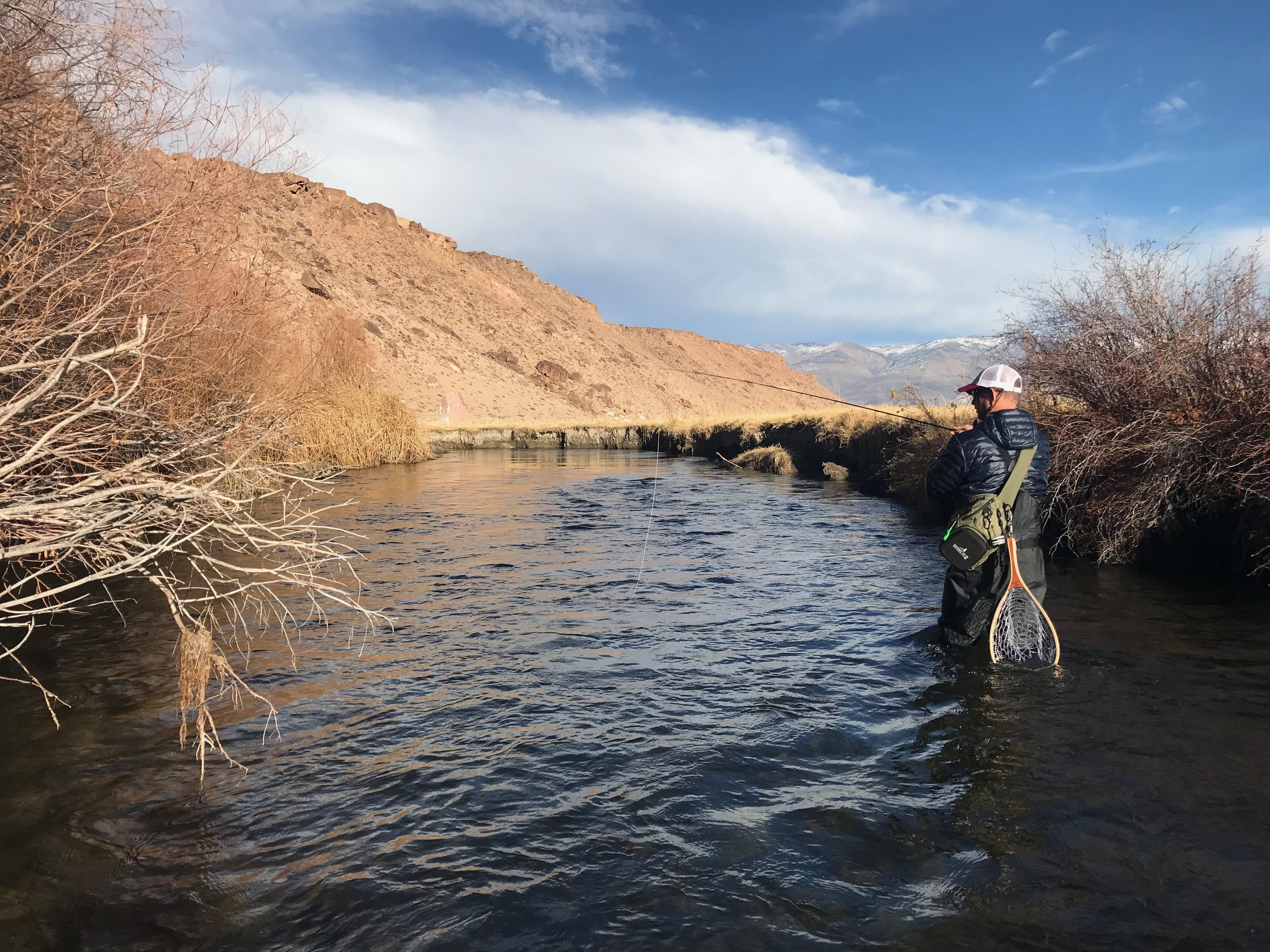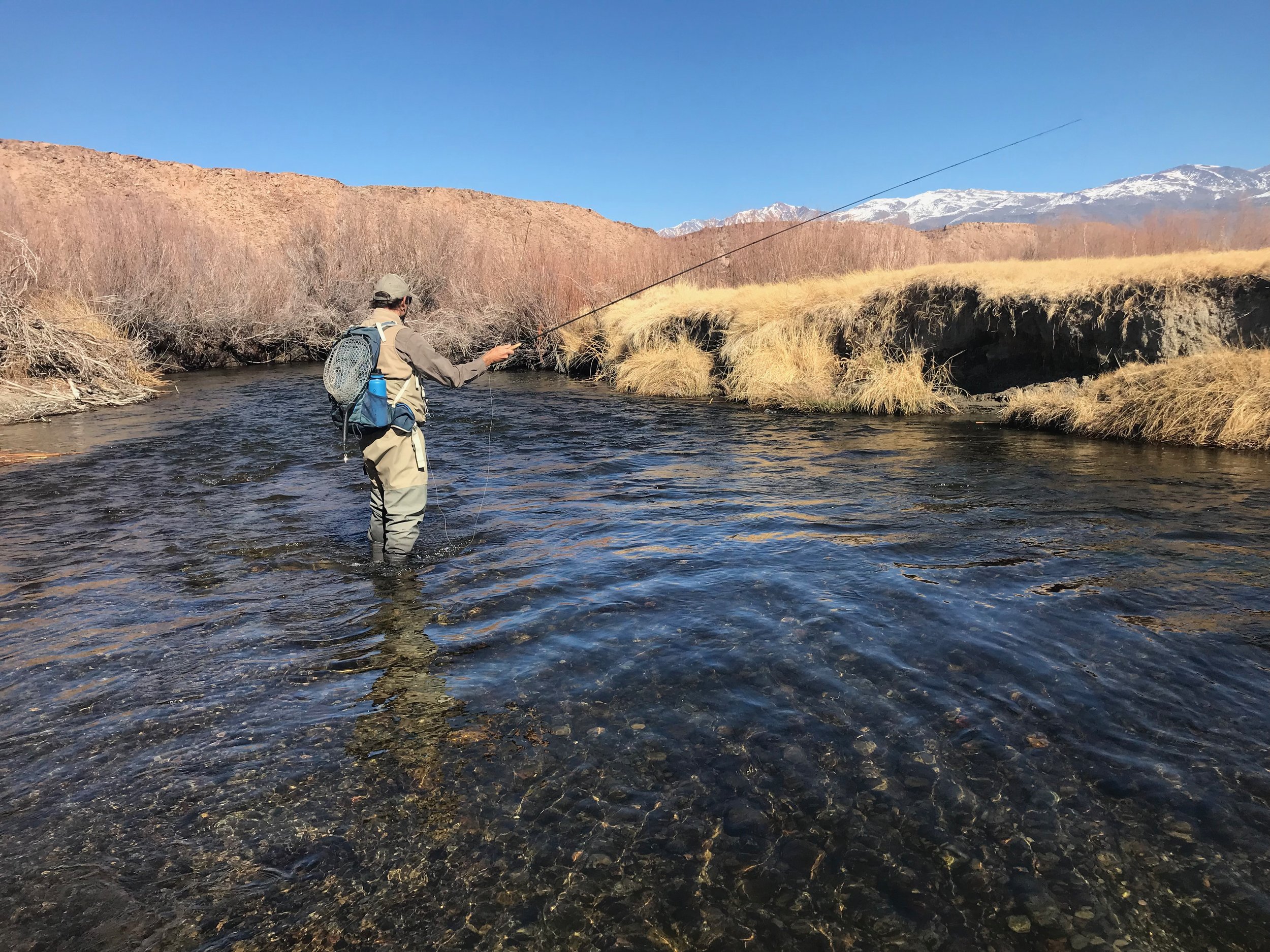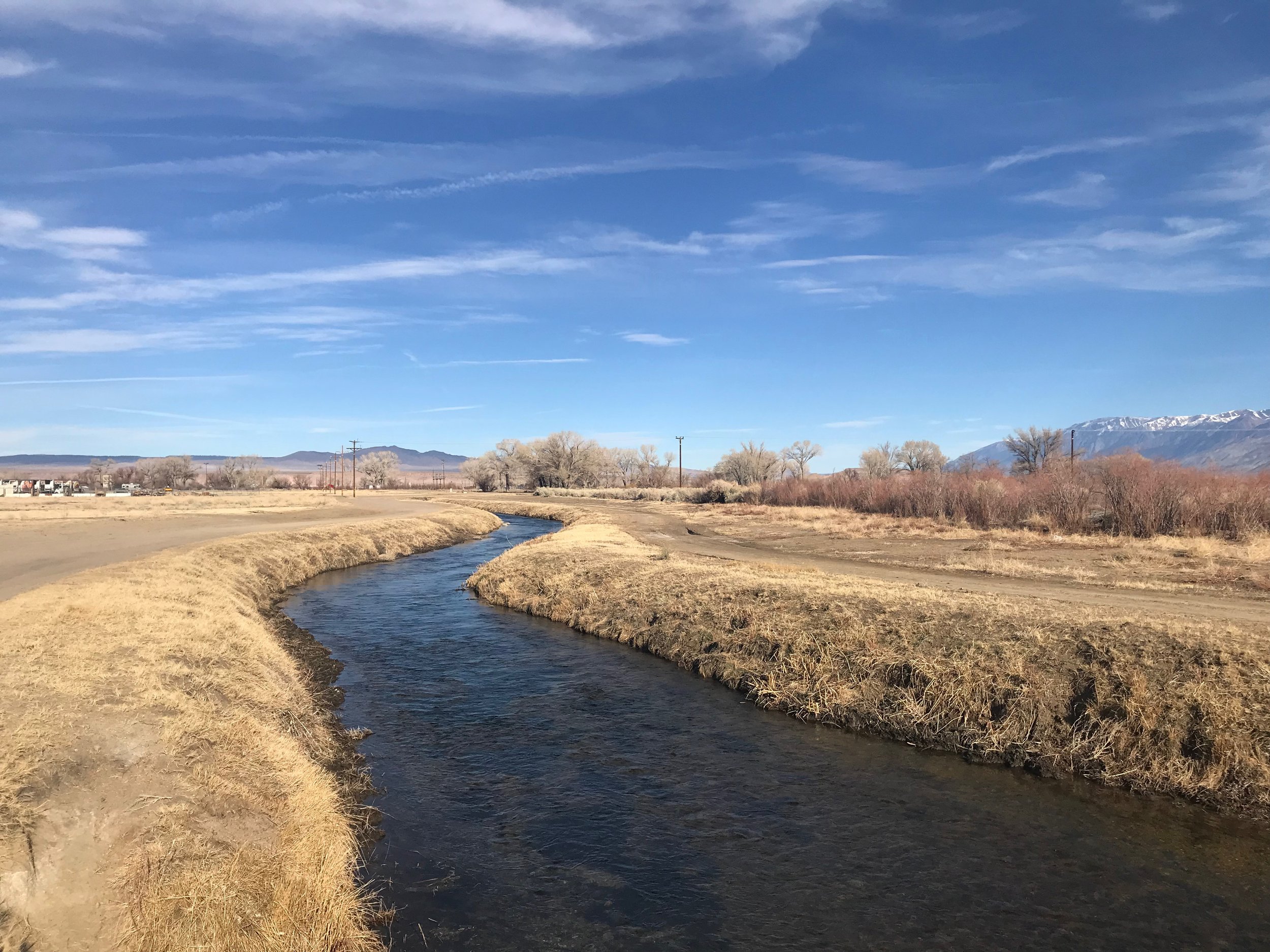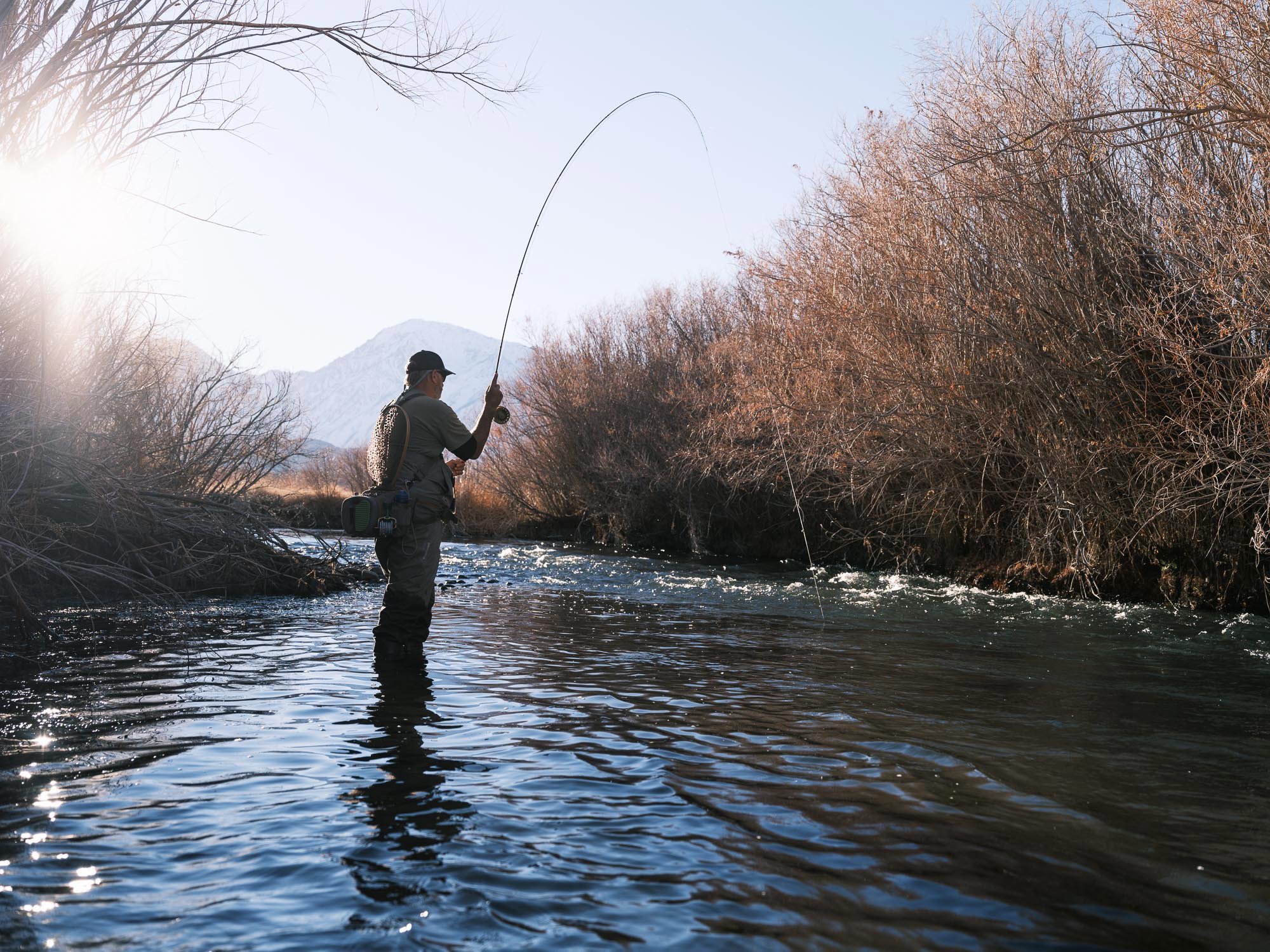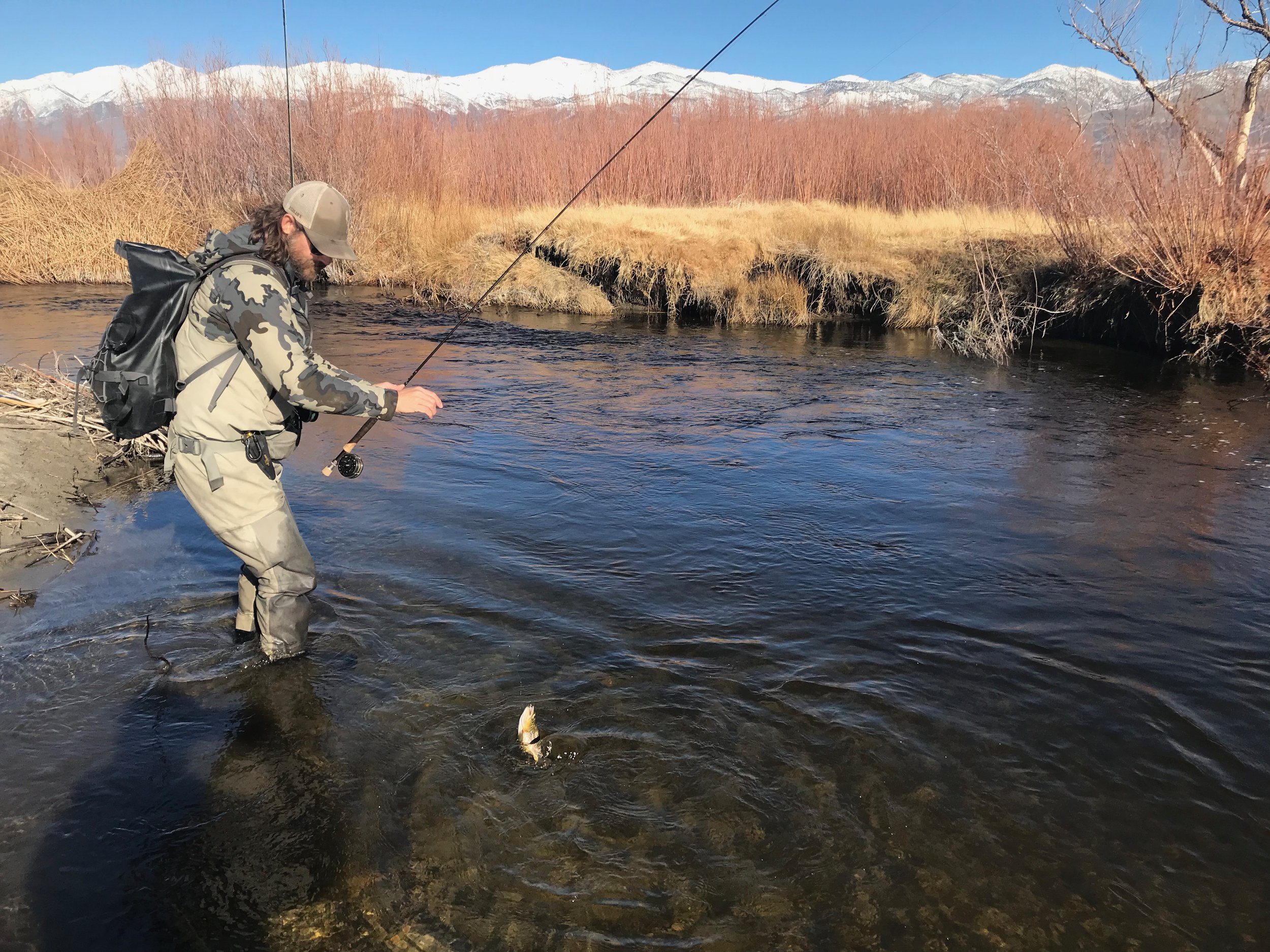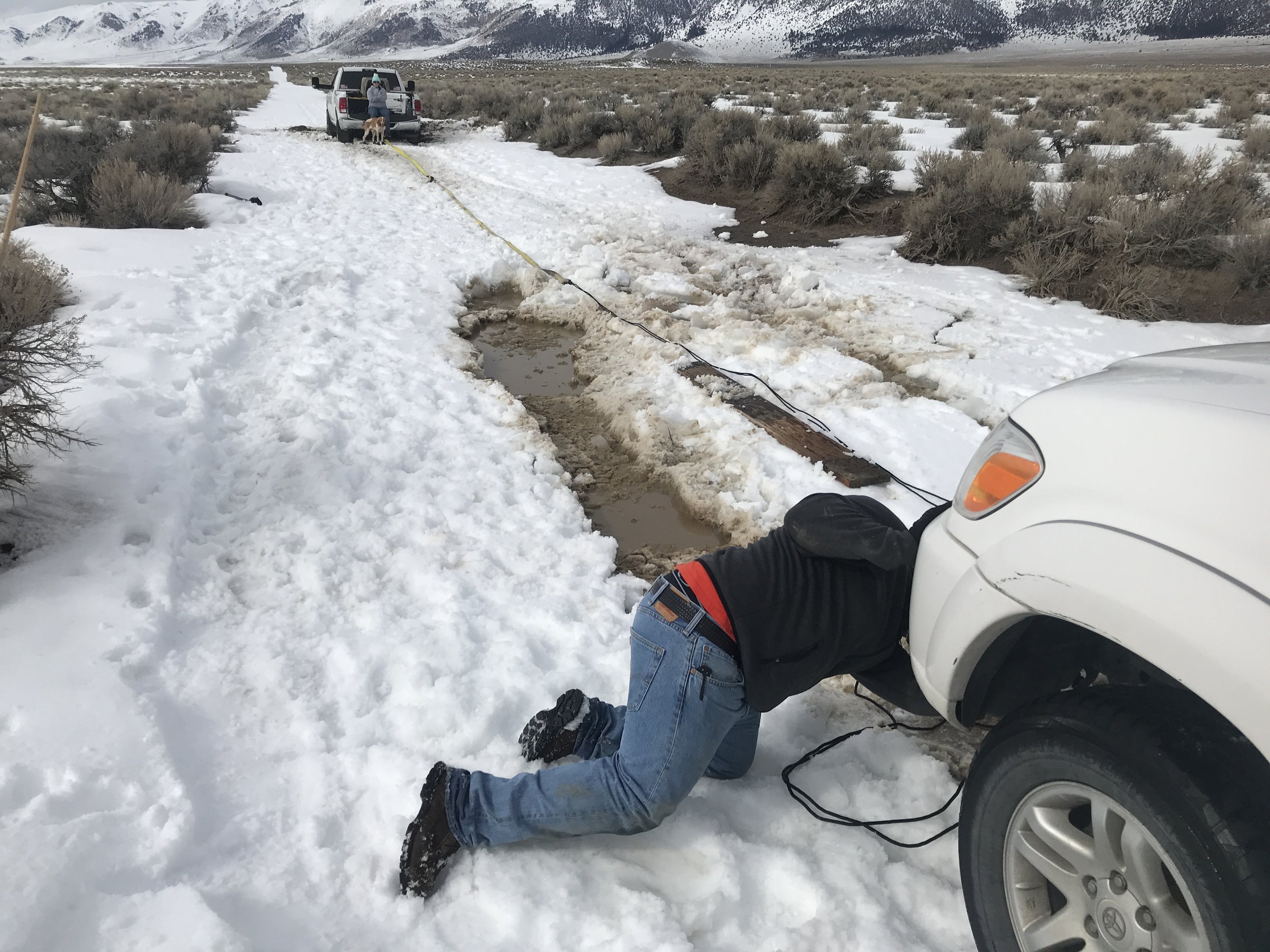Weather is the deciding factor of successful fly fishing in the winter time. Since we are not getting snow at least we have nice warm days to enjoy on the river. The warmer weather is causing the insects to be more active and the trout are actively feeding. Midges are the stable winter food for the trout. The blue wing olive mayflies are just starting to hatch and are offering sporadic dry fly action. It will be a week or two until we see lots of surface feeding trout on blue wing olive mayflies. Mornings in the upper elevations continue to be below chilly and fly fishers need to dress accordingly.
The stoner nymph imitates the winter skawalla stonefly nymphs that will be hatching at the end of the month.
Lower Owens River:
Wild Trout Section:
The sun is shining and the days are warm in the Owens Valley. I’ve been leaving the coat in the truck. The blue wing olive mayflies have been hatching starting around 1:00 P.M. and lasting for about an hour. Fly fishers have to move around to find pools with rising trout during the hatch. Before and after the hatch the trout have been feeding heavily on mayfly nymphs. I’ve been nymphing with size 16 olive quilldigons and size 18 bead head flash back pheasant tail nymphs. For dry flies I’m using size 18 blue wing olive parachutes and size 18 olive sparkle duns.
It’s warm enough mid-day to wear a T-shirt while out Euro nymphing on the lower Owens River.
Hot Creek:
Interpretive Site:
Warm temperatures at the creek have midges and blue wing olive mayflies hatching. A size 18 blue wing olive with a size 20 tiger midge has been a good combo to fool the wild trout at the interpretative site of Hot Creek. The creek is fishing best during the warmest part of the days which has been early afternoon. These fish are spooky and fly fishers need to make a stealthy approach.
Hot Creek:
Canyon Section:
In the morning the walk in to the canyon is easier with the frozen snow. The walk out in the soft snow is taxing at times. Nymphing under a dry fly is the most productive method to fish the creek. Use a size 16 Adams parachute or a size 18 blue wing olive parachute for the dry fly. Hang a size 16 olive quilldigon, a size 18 bead head flash back pheasant tail nymph, a size 20 tiger midge or zebra midge on 24 inches of 5X fluorocarbon tippet attached to the bend of the dry fly with a cinch knot. On the warmer days in the right spots of the canyon the dry fly activity is good enough to switch from nymphs to dry flies.
Upper Owens River:
Above Benton Crossing Bridge:
The snowmobiles are getting out to the river ahead of the fly fishers walking, cross country skiing, or snowshoeing into the river. They are controlling the better holes as they stay on them all day. Fly fishers not on snowmobiles need to find the deep holes, runs or under cut banks that are holding trophy trout migrating up from Crowley Lake. The fish in the deep holes and runs are resting and feeding. These fish are looking for food that will provide lots of calories. The stoner nymph, green/gold Prince nymph, and gold ribbed hare’s ear in size 12 offers the trout a bigger meal.
Mid-day blue wing olive mayfly hatches are bringing trout to the surface to feed on size 18 blue wing olive parachutes.
Bishop Creek Canal:
Behind the Ford Dealer:
Middle of the day is seeing a good blue wing olive hatch that has the trout coming to the surface to feed on the hatching mayflies. The trout in the canal are skittish and require a subtle approach to catch them. I’m using a size 16 Adams parachute or a size 18 blue wing olive parachute with a nymph attached to a three foot tippet of 5X fluorocarbon. For the nymph I’m fishing with size 16 olive quilldigon, size 18 bead head flash back pheasant tail nymph, and size 20 tiger midge or zebra midge.




